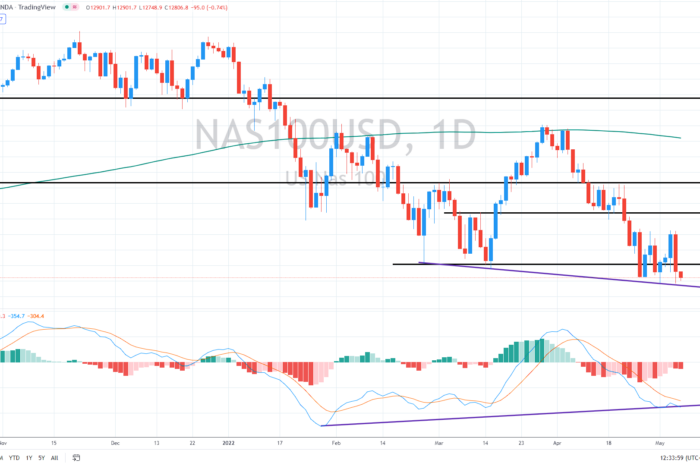After a severe sell-off on Wall Street, the Nasdaq 100 index continued to trade lower Friday, losing 1% during the London session and dropping to new cycle lows below 12,800 USD.
The Nasdaq fell 5% Thursday, the worst day since June 2020. The Dow plunged almost 1,000 points as concerns about the Federal Reserve’s capacity to keep inflation low while sustaining steady economic growth resurfaced.
Inflation concerns reappeared
Investors assessed the ramifications of the Federal Reserve’s updated monetary policy route forward as stocks swung violently from gains to losses on Thursday. While investors cheered Fed Chair Jerome Powell’s comments that the central bank would not consider raising rates by more than 75 basis points at a time, they must also consider whether relatively less aggressive hikes will be able to bring down inflation, which is at its highest level since the 1980s.
US labor market in focus
April’s US employment market data is anticipated later today, so volatility is likely to persist. Non-farm payrolls are expected to fall to 391,000 from 431,000 earlier. The unemployment rate is projected to decrease to 3.5 percent. Wage growth is predicted close to March levels, lagging far below inflation.
You can also read: USD/JPY recovers from FOMC induced losses
A reading above 500,000 could prompt the Fed to tighten policy more quickly, perhaps leading to a recession. This means selling stocks, bonds, gold, cryptos, DM, and EM FX and buying US dollars. A report below 300,000, on the other hand, should result in a sigh of relief and a lessening of the Fed tightening rally. Buy equities, bonds, gold, cryptos, DM, and EM currencies and sell US dollars.
Finally, John C. Williams, president of the Federal Reserve Bank of New York and a voting member of the FOMC, will talk later today, presumably to sound dovish to calm the markets.
Technically speaking, the index appears heavily oversold. On the other hand, any rallies (such as the one on Wednesday) are aggressively sold-off. This week’s lows are near 12,700 USD, and if Nasdaq drops below that level, we might see a sharp decline to 12,500 USD pretty quickly.
On the other hand, there is a significant bullish divergence between the MACD indicator and the price, possibly signaling a change in the direction. However, we must first see some positive fundamental news for that to happen – whether some resolution to the war in Ukraine or some drop in global inflation.











Comments
Post has no comment yet.